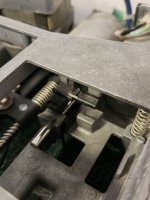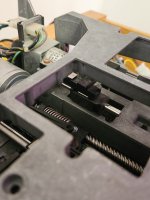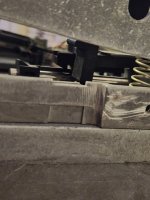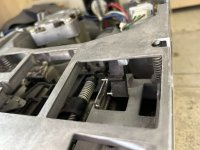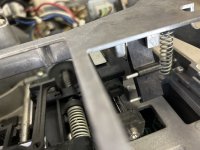I have two Siemens FDD 100-8 floppy drives on my S-100 system, along with a spare, and I'm using a Jade Double D disk controller board. I've done what repairs I can (designed and 3D printed some components for the drive latch mechanism, replaced the felt head load pad, checked the PLL with my oscilloscope as I recall) but they're still quite unreliable. I can get CP/M to boot from a known-good disk about 50% of the time, but loading programs seems to always fail.
If I had the necessary documentation and disk/tools I could try calibrating these drives, but I'm thinking it'd be better to get a more reliable drop-in replacement drive.
Does anyone have something that'll fit the bill? I hear Shugart SA-800/801 single-side full height drives are very reliable, with some others being strong contenders as well. I'd also be interested in hearing about the calibration procedure and what I'd need to get to do it.
If I had the necessary documentation and disk/tools I could try calibrating these drives, but I'm thinking it'd be better to get a more reliable drop-in replacement drive.
Does anyone have something that'll fit the bill? I hear Shugart SA-800/801 single-side full height drives are very reliable, with some others being strong contenders as well. I'd also be interested in hearing about the calibration procedure and what I'd need to get to do it.

